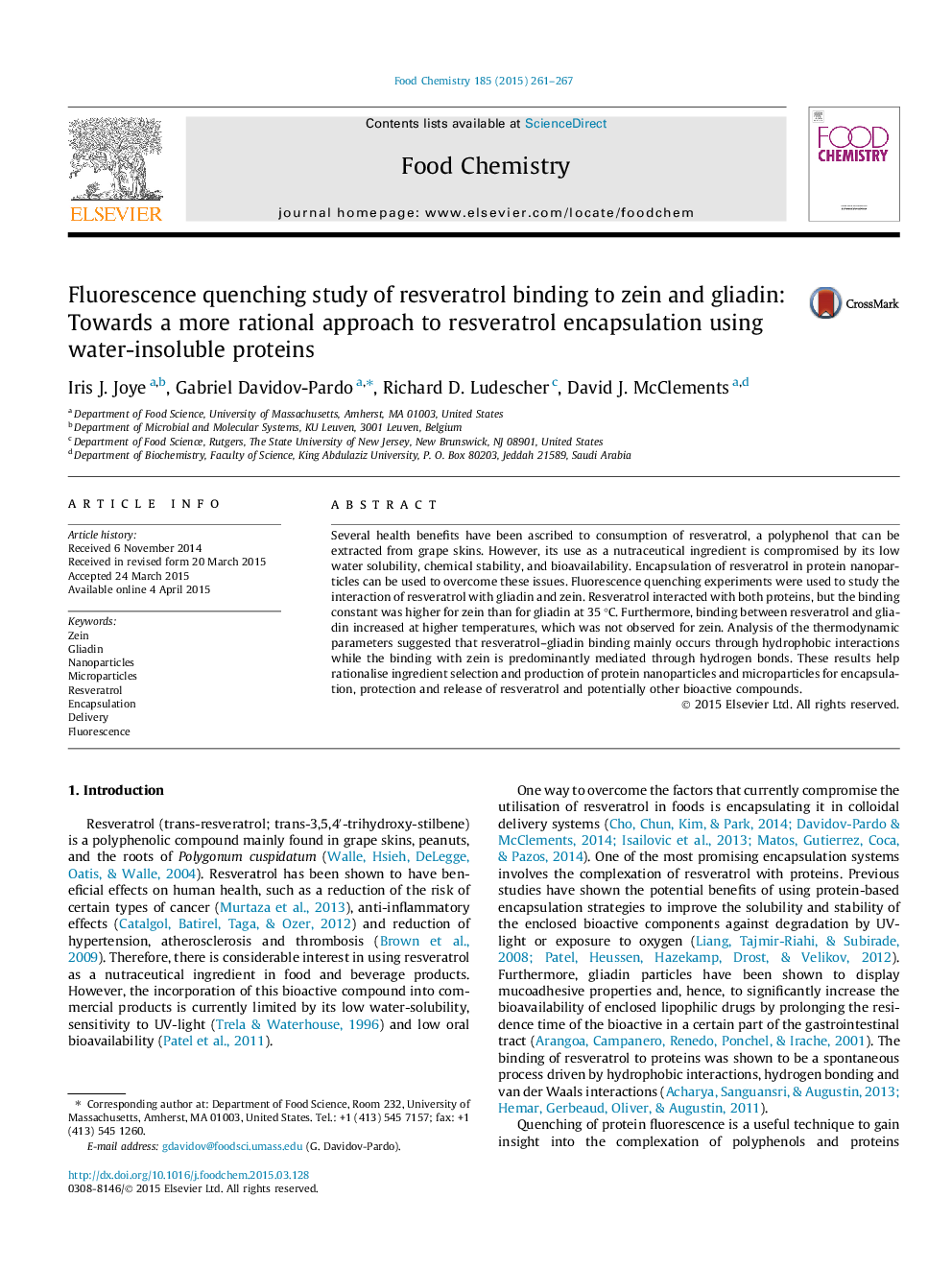| Article ID | Journal | Published Year | Pages | File Type |
|---|---|---|---|---|
| 7591571 | Food Chemistry | 2015 | 7 Pages |
Abstract
Several health benefits have been ascribed to consumption of resveratrol, a polyphenol that can be extracted from grape skins. However, its use as a nutraceutical ingredient is compromised by its low water solubility, chemical stability, and bioavailability. Encapsulation of resveratrol in protein nanoparticles can be used to overcome these issues. Fluorescence quenching experiments were used to study the interaction of resveratrol with gliadin and zein. Resveratrol interacted with both proteins, but the binding constant was higher for zein than for gliadin at 35 °C. Furthermore, binding between resveratrol and gliadin increased at higher temperatures, which was not observed for zein. Analysis of the thermodynamic parameters suggested that resveratrol-gliadin binding mainly occurs through hydrophobic interactions while the binding with zein is predominantly mediated through hydrogen bonds. These results help rationalise ingredient selection and production of protein nanoparticles and microparticles for encapsulation, protection and release of resveratrol and potentially other bioactive compounds.
Related Topics
Physical Sciences and Engineering
Chemistry
Analytical Chemistry
Authors
Iris J. Joye, Gabriel Davidov-Pardo, Richard D. Ludescher, David J. McClements,
